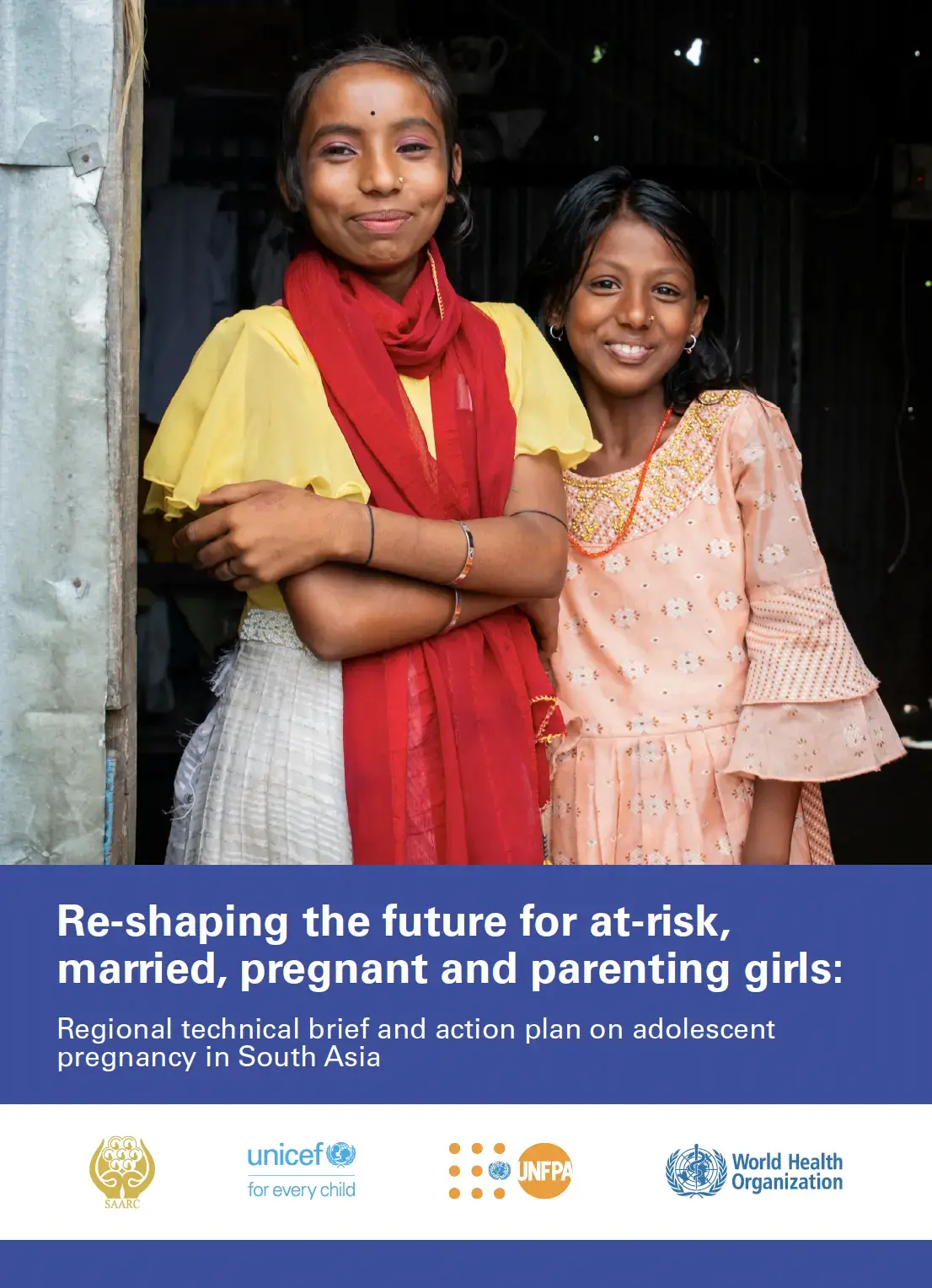Adolescent pregnancy and parenting are common – yet also commonly overlooked – adverse events in South Asia. The 2.2 million births experienced by adolescent girls in the region every year have far-reaching implications for mothers and their babies, as well as for their communities and countries. Motherhood during childhood negatively influences the physical and mental development of adolescent girls, disrupts their education, deprives them of financial independence and exacerbates intergenerational cycles of poor health, nutrition, poverty and deprivation. Across the region, adolescent pregnancy is driven by a complex network of interlinked causes, including child marriage, gender and social norms, poverty, values and expectations around female fertility and childbearing, stigma and a lack of adolescent-friendly and adolescent-responsive health services and information.
South Asia is home to over 354 million adolescents, more than 170 million of whom are girls and account for about 26.6 per cent of the world’s adolescent girls. In this region, 26 out of every 1,000 girls give birth during adolescence, resulting in over 2.2 million births to girls aged 15–19 years. An estimated 10 per cent of young women aged 20–24 in South Asia gave birth before the age of 18.3.
This technical brief has been developed to inform discussions during the South Asia Regional Dialogue on Adolescent Pregnancy held in Kathmandu in 2024, convened by the South Asian Association for Regional Cooperation (SAARC) with the support of the United Nations Children’s Fund (UNICEF), United Nations Population Fund (UNFPA) and the World Health Organization (WHO). The regional dialogue concluded with all members sharing their countryspecific draft action plans to strengthen the prevention and care of adolescent pregnancy and parenting, informing the finalization of this technical brief and the development of the regional action plan.
The Regional Action Plan outlines seven priority areas and key strategic interventions to address the needs of pregnant and parenting adolescents comprehensively and holistically. These include reviewing and reforming relevant laws and policies; creating a solid backbone for programme implementation; targeting adolescent girls through school and learning platforms to ensure they are in school and learning or have access to alternative skilling opportunities to transition to employment; putting in place health and nutrition services and platforms tailored to the needs of pregnant and parenting adolescents, supported by a network of health-care workers and referral linkages.


